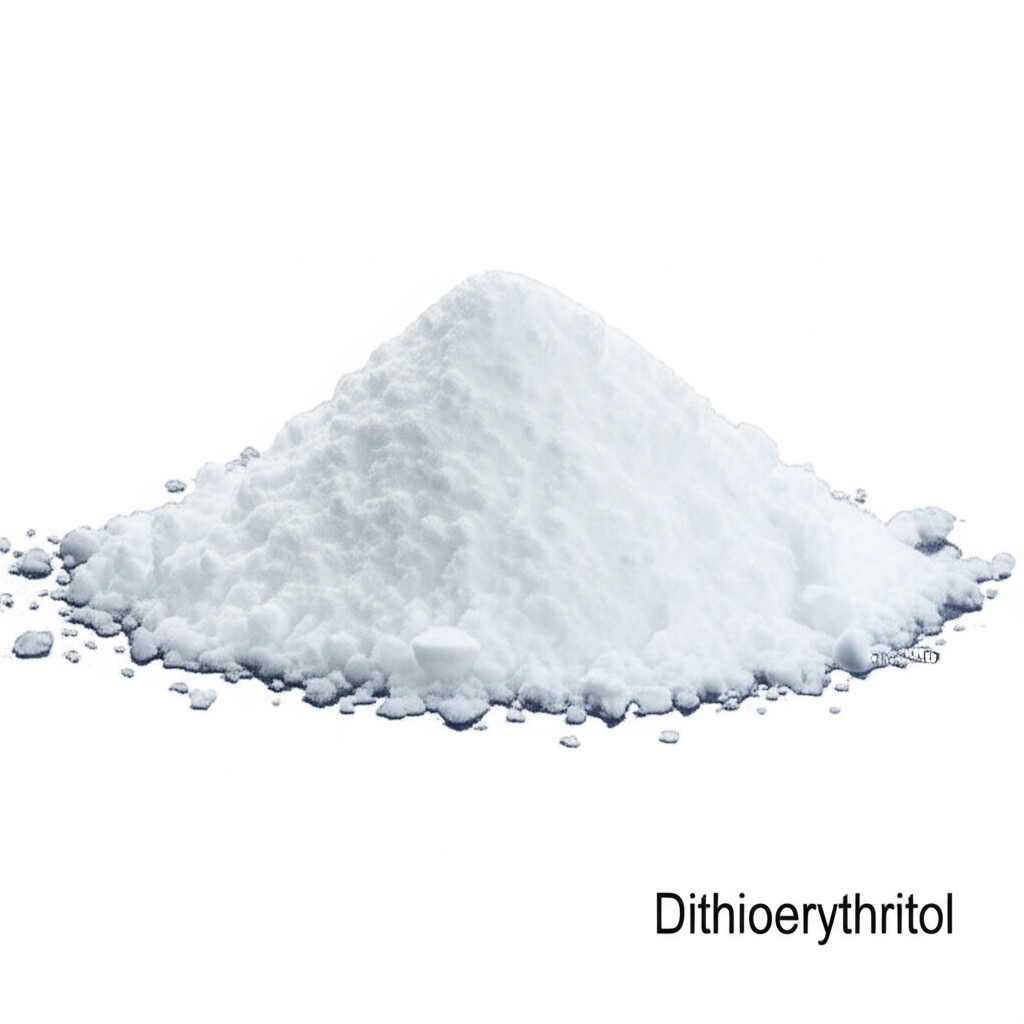Dithioerythritol (DTE): A Comprehensive Guide
Explore the essential properties and diverse applications of DTE, a key reagent in biochemical research.
Get a Quote & SampleProduct Core Value

Dithioerythritol
Dithioerythritol (DTE), also known as Cleland's Reagent, is a critical chemical compound widely utilized in various life science applications. Its primary function stems from its potent reducing capabilities, enabling the efficient reduction of disulfide bonds in proteins and peptides. This process is vital for maintaining the structural integrity and activity of many biological molecules. Furthermore, DTE acts as a protective agent for sulfhydryl groups, safeguarding them from unwanted oxidation, which is crucial in numerous biochemical assays and protein handling procedures. Its solubility in water and alcohols makes it a versatile reagent for diverse experimental setups.
- Discover the potent reducing capabilities of DTE for breaking protein disulfide bonds. This property is fundamental in protein analysis, ensuring accurate structural and functional studies of complex biomolecules.
- Learn how DTE serves as a crucial sulfhydryl protecting agent, preventing oxidation and maintaining the integrity of sensitive biomolecules during experimentation and storage.
- Understand the biochemical significance of DTE in molecular biology, particularly its role in stabilizing enzymes and facilitating research in areas like proteomics and gene expression studies.
- Explore the advantages of DTE over other reducing agents, such as its stability and specific reaction mechanisms, making it a preferred choice for many laboratory applications.
Key Advantages of DTE
Superior Reducing Power
DTE exhibits strong reducing properties, making it highly effective at cleaving disulfide bonds, a critical step in many protein denaturation and analysis protocols, assisting researchers in understanding protein structure and function.
Sulfhydryl Group Protection
As a protective agent for sulfhydryl groups, DTE prevents oxidation, thereby preserving the activity of enzymes and other sensitive biomolecules, which is vital for reliable experimental outcomes.
Versatile Solubility
With excellent solubility in water and common organic solvents like ethanol, DTE can be easily incorporated into a wide range of buffer systems and experimental conditions, enhancing its utility.
Key Applications
Protein Analysis
DTE is instrumental in reducing disulfide bonds of proteins, a key step for SDS-PAGE and other protein characterization techniques, ensuring accurate molecular weight determination and structural analysis.
Biochemistry and Molecular Biology
Its role as a protecting agent for sulfhydryl groups makes DTE essential for maintaining the stability and activity of enzymes and other biomolecules in various research settings.
DNA Immobilization
DTE is used to prevent dimerization of thiolated DNA, improving the efficiency of subsequent coupling reactions, such as DNA immobilization on biosensor surfaces, supporting advancements in diagnostics and nanotechnology.
Antioxidant Properties
DTE can act as an antioxidant, protecting cells and biomolecules from damage caused by reactive oxygen species, which is beneficial in studies related to oxidative stress and cellular health.
